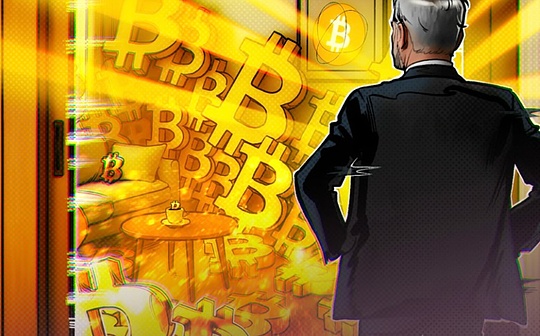
Author: CryptoCompound, compiled by: Shaw bitchain vision
The power of silence beneath the surface
The market headlines are constantly buzzing – Bitcoin has set new highs, Ethereum has regained its dominance, and altcoins have also become active.However, behind these hustles, on-chain data tells a quieter, more powerful story.
Every big bull market started long before the public realized it.The first half of the bull market is often incredible – investors are waiting for a “better entry time”, traders choose to leave every breakout, while skeptics believe that the market is overexpanding.However, the underlying basic signals of blockchain—funding, holdings and behavioral performance—revealing quietly reveal whether demand is sustainable or speculative.
Currently, these signals look surprisingly similar to those in early 2020 and mid-2016 – two periods where the market has just begun its real expansion phase.
Let’s analyze the evidence.
ETF demand becomes new structural buying
The biggest change in this cycle is who is buying.
Last week alone, spot Bitcoin ETFs listed in the United States were recordedNet inflow of $3.24 billion, setting the second largest single-week inflow since its launch.This is not the fanaticism of retail investors, but the capital allocation made by institutions through compliant and regulated channels.Each fund flowing into these funds represents the actual purchase of Bitcoin, transferred to cold wallet storage, and removed from circulation.
This continuous inflow of funds fundamentally changes the supply and demand balance of Bitcoin.Previously, the enthusiasm of retail investors once promoted the bull market in Bitcoin; but now, the systemic capital inflow through ETFs has formed a stable low-price buying.
When traditional consultants can allocate Bitcoin like they are allocated for gold or stocks, the potential configurable funding scale will expand from billions to trillions of dollars.We are witnessing the beginning of what Fidelity calls the “institutionalization phase” of Bitcoin.
As the macroeconomic situation remains unclear, it is no coincidence that the market soars.This is not a speculative surge, but the beginning of a structural revaluation.
Exchange balance is crashing
Although funds inflows through ETFs have increased, exchange reserves are declining rapidly.
Among the major centralized exchanges,Bitcoin reserves have fallen to their lowest level since 2019——This is the lowest point in more than five years.More than 100,000 Bitcoins have been withdrawn from exchanges in recent weeks.This is important because the exchange balance is like the supply inventory that can be sold.When Bitcoins leave the exchange, they are usually transferred to custody, cold wallets, or long-term storage.
Every bull market in Bitcoin’s history has shown this pattern: Bitcoin’s circulation on exchanges gradually decreases, while the price continues to rise.This is a manifestation of confidence—holders’ interest in trading is weakened, while their interest in long-term holdings is increased.
Meanwhile, even as the Bitcoin price breaks above $125,000, the Bitcoin holding ratio of long-term holders (LTH) remains near all-time highs.Typically, all-time highs can lead to large-scale profit-taking.But this time, many long-term investors chose to remain silent.
When Bitcoin is locked up by investors without selling it, even a small amount of new demand can have a huge impact on the price.This is the leverage hidden in the fixed supply of Bitcoin.
The rise of “Ill liquidity supply”
Another key indicator is “Illegal Supply”.It measures how much of Bitcoin’s circulating supply is located in a wallet with little or no consumption history.
According to Glassnode data,This figure has recently reached a record 14.3 million Bitcoins, accounting for about 68% of all existing Bitcoins.This means that almost 7 out of every 10 Bitcoins have actually exited the market.
This dynamic leads to what analysts say“Supply Tightening”situation.As ETF demand continues to grow and the new issuance volume remains fixed at 3.125 BTC per block after the halving, available liquidity is further reduced.
This is why every decline is slight, and every pullback is quickly digested by buying.Supply simply cannot meet demand.
Our position in the cycle
On-chain data helps determine which stage of the cycle we are in—not through price, but through behavior.
There are two key indicators that are particularly prominent:
-
Short-term holders (STH) Cost base: This level has shifted from resistance to support – historically, this shift marks the beginning of a sustained bull market trend.
-
MVRV ratio (ratio of market value to realized value): This indicator measures the degree of deviation of price relative to the total cost basis.During the top period of fanaticism (2017, 2021), MVRV soared to extremely high levels.Currently, the ratio is in a neutral area, closer to the level at the beginning of the bull market.
In short: the market is not overscaling – it is in a healthy state, is regaining momentum, and has strong fundamentals as support.
Stablecoins and liquidity expansion
If Bitcoin is an asset, then stablecoins are the funds that reach Bitcoin’s track.
After nearly two years of shrinkage,Global stablecoins market value has begun to rebound, exceeding US$314 billion.Judging from historical data, this indicator is several months ahead of the main risk appetite period in the cryptocurrency market.The growth of stablecoins shows that liquidity is returning to the cryptocurrency ecosystem as the lifeblood of transactions and capital flows.
As stablecoins grow, funds flow more freely into altcoins, DeFi and other digital assets.This wave of ups has driven the prosperity of the entire market.
And this process has just begun.
Changes in behavioral patterns: accumulation rather than speculation
Each cycle has its behavioral characteristics.In the later stages, greed dominated: high leverage, short-term trading and quick turnover.In the early stages of the cycle, the situation is the opposite – the holder quietly increases his holdings, and volatility gradually weakens.
This is what we are seeing now.
Glassnode’sAccumulate trend ratings(Used to track whether different wallet groups are net buyers or net sellers) has climbed above 0.5 for the first time in recent months.Retail wallets are starting to accumulate again, medium-sized holders are rebuilding positions, while Giant Whale is basically stable.
This general accumulation model reflects the early stages of previous bull markets, when investor confidence increased, but public attention has not yet reached its peak.
Macro background: Return with the wind
The macro environment is another key level.
Rate cuts are put on the agenda again.Central banks have sent signals that austerity policies have come to an end.Fiscal expenditures remain high and government debt continues to expand – which puts greater pressure on the long-term value of fiat currencies.
In such an environment, investors will naturally seek scarce non-sovereign assets.Gold, stocks, and Bitcoin, which is becoming increasingly popular now.
Cryptocurrencies are no longer speculative “alternative” assets.It is becoming a core macro hedging tool—a liquid, borderless, all-weather asset that can withstand currency devaluation.Institutional allocators are aware of this, and their behavior confirms this through the flow of funds in ETFs and the inclusion of portfolios.
Coupled with the tightening of on-chain supply, this creates a perfect storm of structural upward trend.
What factors may invalidate the bull market argument
No argument is considered complete without considering the factors that may be falsified.
Here are the key signals to pay attention to:
-
Exchange reserve balance rises: If exchange reserves continue to increase steadily over the weeks, it may mean that holders are preparing to sell.
-
ETF capital inflows decreased: If institutional demand cools down and long-term holders start selling, this may herald a mid-term cycle adjustment.
-
Extreme MVRV readings: If the valuation indicators start to show extremely optimistic levels similar to those in 2021, it means the market is overheated.
So far, none of these conditions exist.
How to interpret this stage
Think of the current market as a long and steep staircase—rather than a vertical elevator.
After each rise, there will be pauses, adjustments and brief panic.But the foundation behind it—institutional inflows, supply shrinkage and increased confidence—is more solid than any previous cycle.
Bitcoin may have stood firm at $120,000, but judging from on-chain data, its structure is more like it is in the mid-2020 rather than the end of 2021.We are just entering the accumulation and expansion stage at present.The final distribution phase—that is, the stage where fanaticism begins to spread—is still ahead.
In other words: what the crowd sees is the “top” and what is displayed on the chain is the “starting point”.
Summarize
Prices attract attention, but the on-chain behavior reveals the truth.
The fundamentals of Bitcoin – measurable, transparent and tamper-free – indicate that the market is still in the early stages of a structural upward trend.Institutional investors are buying steadily, exchange reserves are declining, while long-term holders are keeping on the wait and see.
Coupled with the favorable macro background, expanding stablecoin liquidity and extensive basic accumulation, there is only one conclusion:This bull market still has years rather than months of rising momentum.
Every decline in this stage is not a warning, but an opportunity to plan ahead of schedule to rebuild the market from scratch.
This is not the end, it is the beginning.





